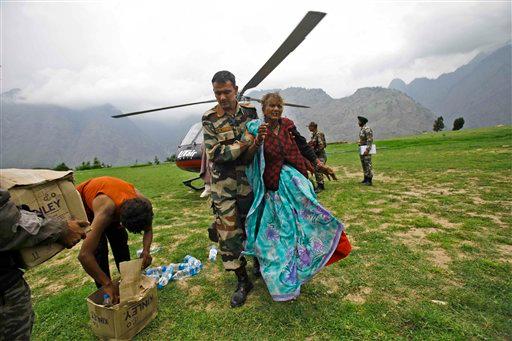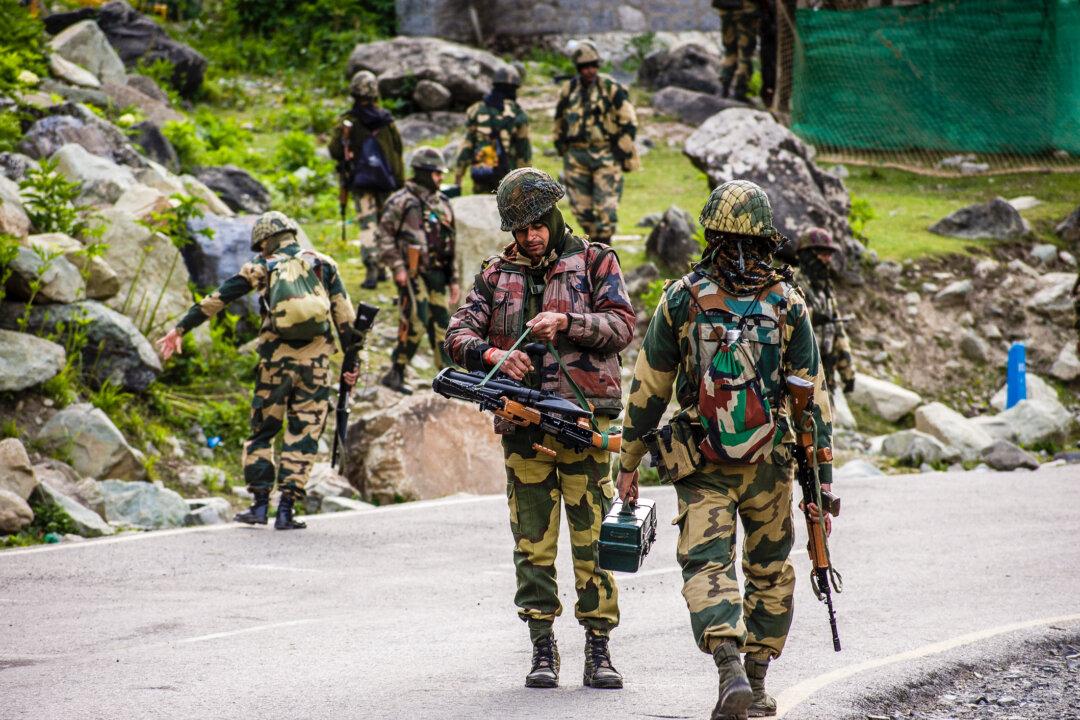In spite of the frequency of landslides in Himalayan regions, a comprehensive disaster-management plan is non-existent and emergency response mechanisms are lacking. Disaster struck last week; an impromptu rescue effort continues. With a death toll currently above 1,000 and rising, more cloudbursts and rain are forecast in the coming days.
The Indian media has labeled the waves of floods that hit the Uttrakhand region’s different basins in the Indian Himalayas June 16–17 the “Himalayan Tsunami.” Large chunks of the Kedar Dome mountain came tumbling down with the flooding. The authorities fear a death toll over 5,000; thousands are missing, thousands are stranded, and property damage has been great.
On Monday, preparations were underway for a mass cremation in the flood-ravaged, revered town of Kedarnath amid concerns of an outbreak of disease from rotting bodies.
The absence of a disaster-management plan has been detrimental, say experts. Rescue teams find it difficult to locate and access survivors without adequate maps. Funds were allocated for an early warning system to predict cloudbursts and flash floods in 2008, but the system remains on the drawing table.
“Every year there are at least 10 major, and hundreds of minor, landslides in the Himalayan regions of Uttrakhand, Himachal, Jammu and Kashmir, Sikkin, and Arunachal Pradesh,” said Dr. S.K. Srivastav, a former Director General of Indian Meteorological Department (IMD). “These problems are not new. They have been happening in history and they will keep happening in [the] future.”
But Srivastav said humans are as much to blame as nature for the disastrous effects currently experienced in the region.
Development in this high-risk zone has proceeded without proper knowledge of the region and requisite technology, he said. “The first thing that is needed for disaster management and planning is a 1:500 scale resolution map. We need a high accuracy map of the area so that we know the physical slopes and the vulnerable areas. We don’t have such a map for that area.”
Topographical information is necessary to understand how flooding could impact the various regions, and to map an escape or rescue route.
“If we have a slope map of 50-centimeter contours, we can exactly map the geological and social mechanisms and can identify the landslide prone area. This is also not there,” he said. A map of 50-centimeter contours refers to the amount of detail in charting elevation levels. Such a map would show how high or low the slope is every 50 centimeters (about 20 inches).
Srivastav said that, since the area is prone to cloud bursts, flash floods, and landslides, an early warning system should be in place. “If we have this system, a cloud burst can be predicted two hours before, and flash floods three hours before. However, this early warning system is also not in place.”
India has an early warning system set up on the cyclone-prone east coast, and Srivastav said the government should put a similar system in place in the Himalayan region.
Himanshu Thakkar of the South Asian Network on Dams, Rivers, and People explained: “The early warning system has been sanctioned since 2008, along with allocated funding, but due to lack of coordination between IMD, the National Disaster Management Authority, and the state government, that system is not in place.”
Thakkar said the Uttrakhand State Disaster Management Authority formed in October 2007 has never actually met, citing an April 2013 report by the comptroller and auditor general of India.
“[The Disaster Management Authority’s] rules, regulations, polices, or guidelines, have not been framed,” Thakkar said.
The Uttrakhand region of the Himalayas is famous for four Hindu shrines, which most Hindus consider important to visit at least once in a lifetime. The region is also famous for its lofty peaks and picturesque valleys, its flora and fauna, and the river Ganges. Millions of tourists visit the region every year when it opens from spring to fall.
Dr. Angeli Qwatra, who currently works as an expert for the National Disaster Management Authority, said a system should be in place to record the flow of pilgrims and tourists in and out of the hazard-prone region.
Qwatra also identified a problem in the swiftness with which state government responded. It did not call in the Indian army, though the army responded of its own accord three days after the floods hit.
“The entire magnitude of the problem [was] not conveyed,” Qwatra said. “If the [army rescue] operation would have started from the first day onwards, people would have been saved within two days.”
“How come so many people died?” she asked. “People have walked down the mountains for six to seven days, and this includes old people and children. What happened to children whose parents died in the disaster?”
On Monday, rain and landslides further hit the region, hampering rescue operations led by the Indian army, the Indo-Tibetan border police and various other agencies.
“There are enough funds for disaster management in the country,” Qwatra said. “It’s just mismanagement and lack of preparedness for response.”





